

The weather has been wet and miserable for ages, but apparently warmer than average, either way, the Blossom is on the early side!
In my days growing apples in Kent, we expected full bloom around 7-9 May. Of course the varieties were predominately Cox Orange Pippin and Bramley culinary apples, plus pollinating varieties like Discovery, Worcester Pearmain et al.
Today the main dessert varieties are Gala and Braeburn with Jazz, Envy, Smitten. These varieties all naturally flower earlier than the older varieties of my youth. But the 'global warming' phenomenon has resulted in earlier seasons by around 2-3 weeks.
Cox and Bramley are currently in Pink Bud so I anticipate they will be in full bloom next week: circa mid April. (2-3 weeks earlier than in my days growing primarily Cox.
Below: left. Braeburn at pink bud last week and right. Braeburn in full bloom yesterday
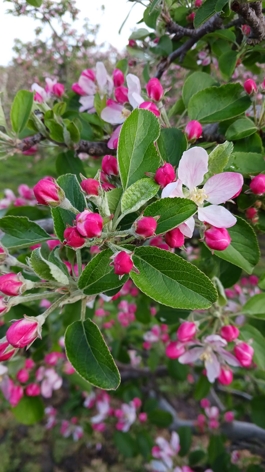
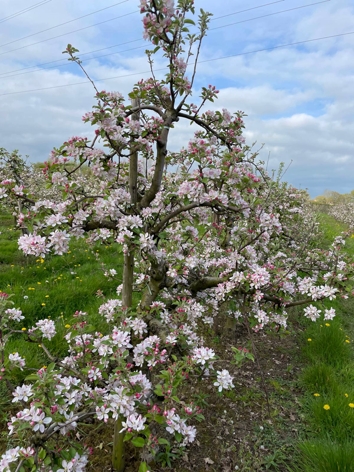
To view one of the English Apple Man Journals with the most beautiful display of apple trees in full bloom: Click on: Full Bloom in 2011
These were taken last week on one farm in West Midlands and sent to me by Jonathon Blackman - first one is Smitten at full bloom. Secondly some bouquets put out to help pollinate some Kissabel
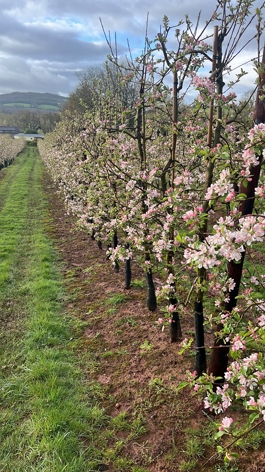
"and finally what a lot of orchards currently look like in the West Midlands. Very, very wet underfoot!
Bellow: left. Cox at balloon stage Pink Bud and right. Bramley at the same stage of Pink Bud
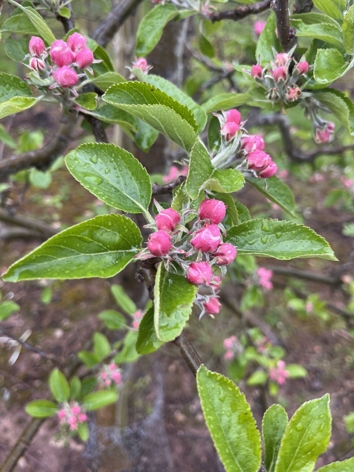
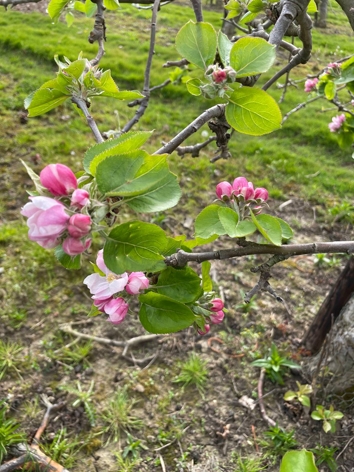
Below: left. Smitten in full bloom and Jazz at full bloom. Both at Simon Bray's Monks Farm near Sittingbourne in Kent
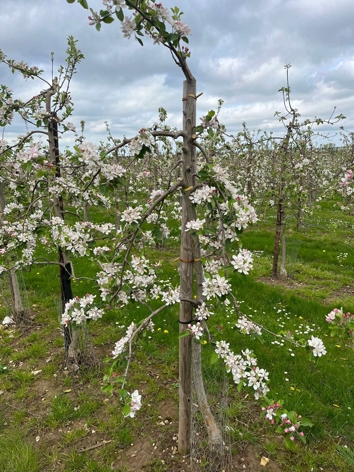
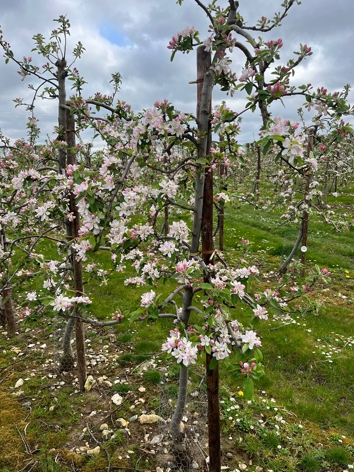
Below: left. Gala at early blossom stage in Kent and right. Rape always a pretty sight, but tends to compete for the pollination services of bees
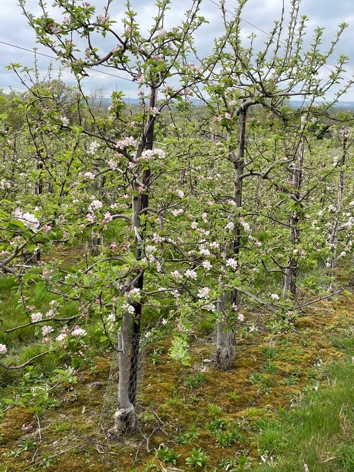
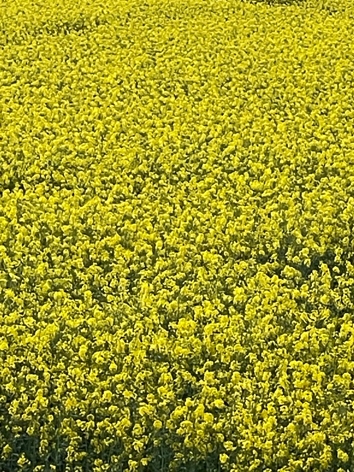
Below: left. A Bumble Bee busy collecting pollen and right. a Honey Bee among the flowers on a Breaburn tree
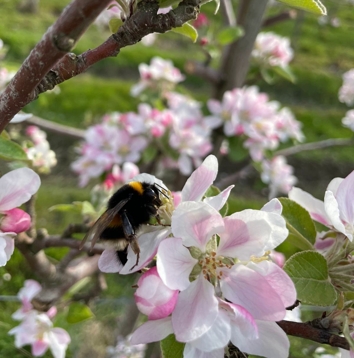
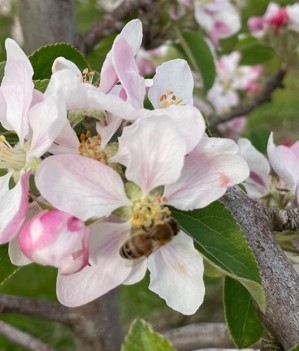
My thanks to Jonathan Blackman - Horticultural Technical Manager at HL Hutchinson for sending me pictures from his home in Hereford, also to Nigel Jenner - Nigel Jenner Chief Technical Officer at Avalon Fresh for sending me pictures from Kent including bees working in the blossom and finally, fruit grower Simon Bray who farms at Monks Farm in Kent for pictures of Smitten, Jazz and Cox.
The English Apple Man Comments:
Nigel sent me pictures of Bees working in apple blossom and I followed up by familiarising myself with a project he is involved with, identifying bees and other pollinating insects visiting our apple orchards with new technology.
Nigel Jenner: "Nice to have some recognition from the Daily Telegraph about the work we have been doing with our number one allies the bees!
"We rely on wild bees and other pollinators for 75 per cent of global crops yet these unappreciated insects are in sharp decline. It is a dire situation that risks having a devastating impact on crop yields and the natural world.
As part of their long-term partnership, Tesco and WWF have invested in a new pilot scheme that hopes to help farmers boost pollinator populations, restoring nature to farms while also increasing crop yields.
While the Polly technology is undoubtedly innovative, Alice Ritchie, Tesco's lead nature and forests manager, says its beauty lies in the fact that it's rooted in nature.
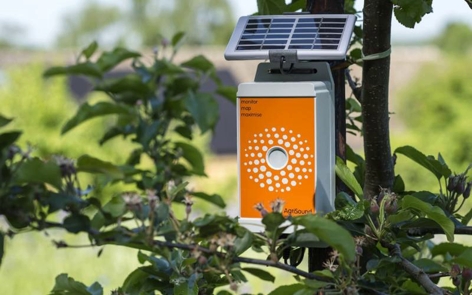 What is Polly and how does it work?
What is Polly and how does it work?
Casey Woodward, founder and CEO of AgriSound, explains that Polly is a "simple and smart listening device" that captures and counts the sounds of common pollinating insects, including honeybees, bumblebees and other bugs.
"Polly is able to recognise the sounds of insects in the environment and use that information to tell farmers and landowners how many pollinators there are in that area at any given time," says Woodward.
Creating a buzz
For AMFRESH, the opportunity to partner with AgriSound came at the perfect time; biodiversity is one of its key sustainability targets, but there wasn't a ready tool to accurately measure populations of key pollinators in the field.
![]() That is all for this week
That is all for this week
Take care
The English Apple Man